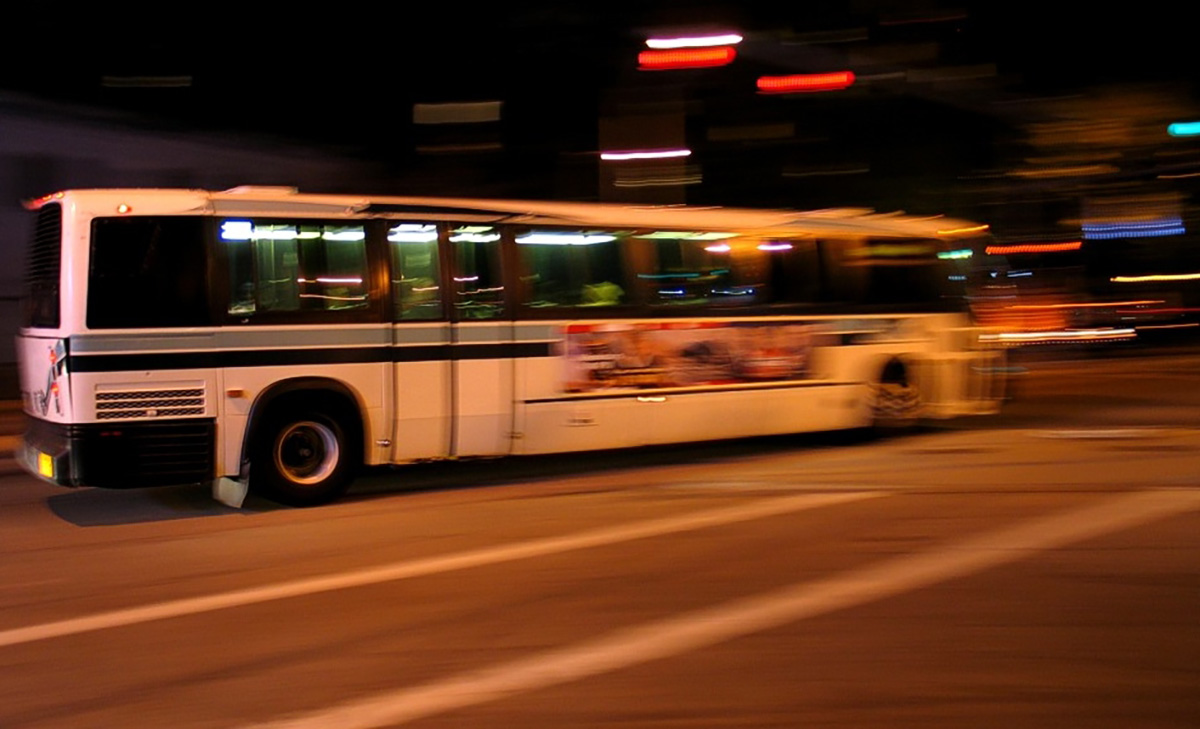
RIPTA bus at night. Photo (cc) .sanden.
[alert type=”warning”]This post was submitted Greater City Providence reader Peter Brassard. If you’ve written something you’d like us to consider posting, please contact us and let us know.[/alert] [alert type=”info”]This is second of a series on ideas for Rhode Island’s transit future.[/alert]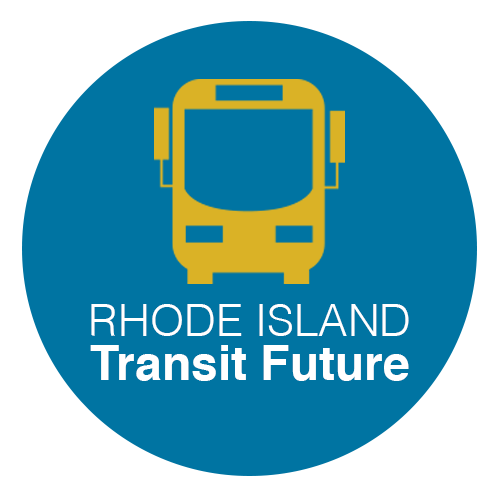 In recent articles and comments to posts, people have suggested that RIPTA might do better if it offered 24-hour service. Twenty-four hour transit would serve a population that is generally forced to drive, which includes nighttime service workers, hospital employees, restaurant, bar and nightclub goers, and travelers.
In recent articles and comments to posts, people have suggested that RIPTA might do better if it offered 24-hour service. Twenty-four hour transit would serve a population that is generally forced to drive, which includes nighttime service workers, hospital employees, restaurant, bar and nightclub goers, and travelers.
I started looking at what night service might look like, but before this Boston Globe article came out about the MBTA late night service being on the chopping block.
Regarding the Boston area transit system, besides being more extensive than Rhode Island’s, they have the challenge of providing both nighttime bus and subway service. With the subway the costs go up dramatically, especially if trains are mostly empty. The Providence area is nowhere as complicated as in Boston, so a simpler strategy is possible for providing an affordable late night service.
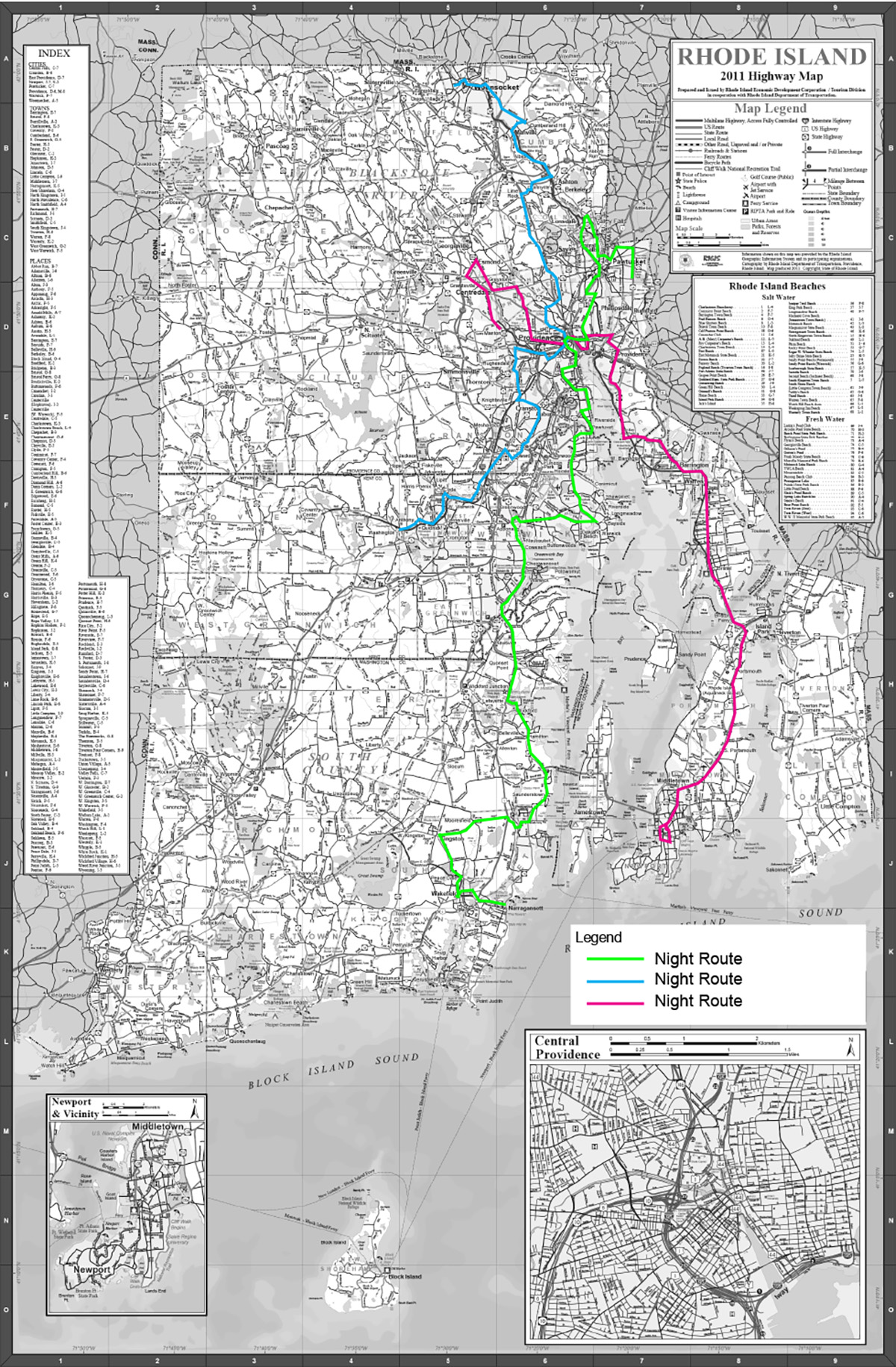
Over 90% of Rhode Island’s population lives within a few miles of Narragansett Bay, the Blackstone River, and the Pawtuxet River. Rhode Island’s overall population and highest density areas generally follow linear paths, but in contrast the City of Providence has a radial distribution of streets and population. I found one solution that might work for off-hour late night service that addresses Providence’s street configuration.
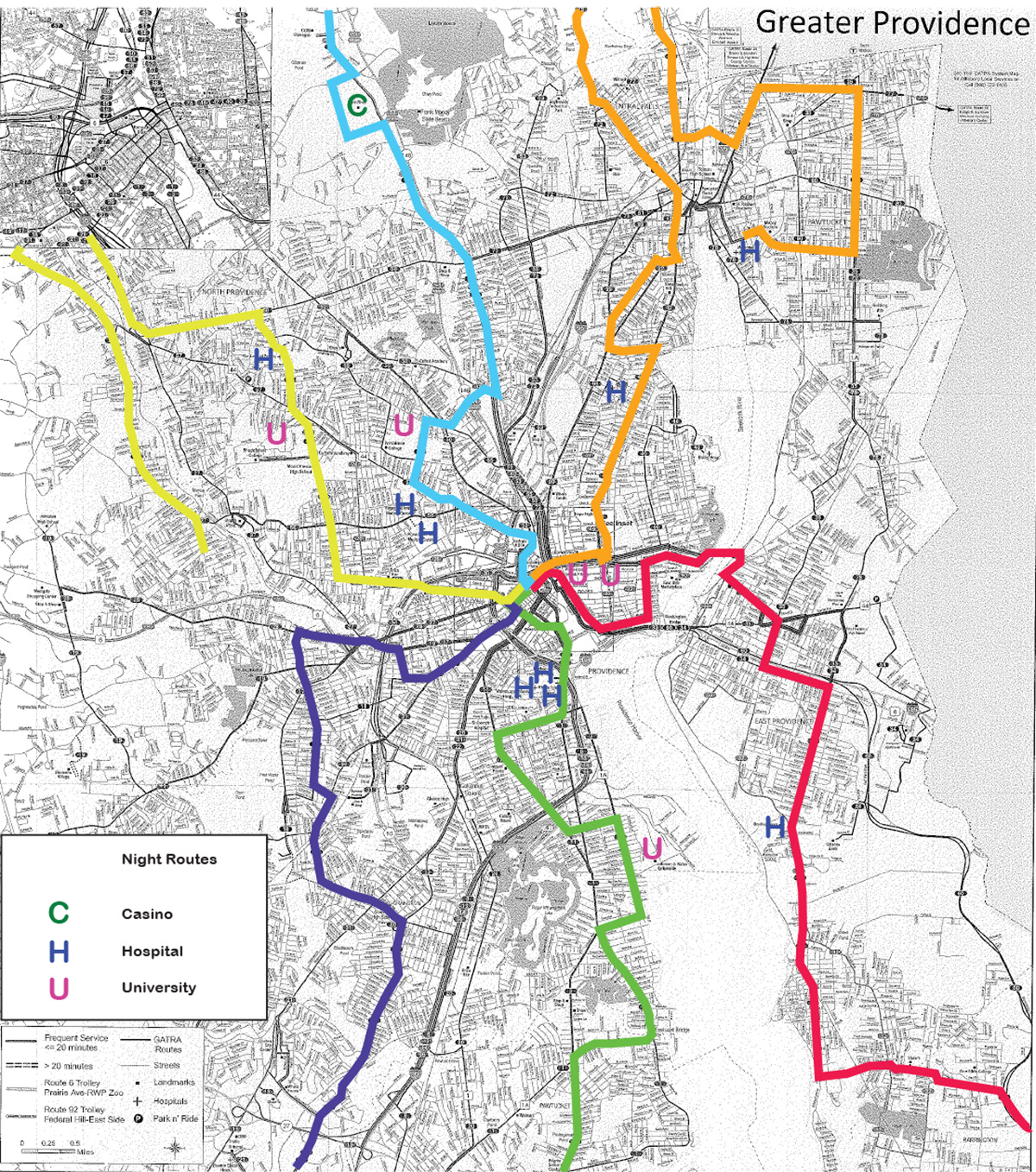
In the statewide map the number of bus routes is limited to three (3), though the routes could also be broken up into six (6) emanating out from Kennedy Plaza, as shown in the Greater Providence map. Within the city, a loose pinwheel shaped route system design allows for a maximum 15-minute walk in most neighborhoods from any of the night routes. Suburban areas would also be within a short 5-minute drive in addition to walking distance.
The night routes in this plan shift from one major street to another to insure maximum coverage of neighborhoods and connectivity. Besides the central Providence cultural and entertainment areas, all of the colleges and hospitals, as well as Twin River Casino are adjacent to night routes where stops could be placed to serve those who tend to travel during the late night or early morning hours.
Besides service employees, late night bus service would be especially helpful for some travelers who live in distant parts of the state. People often avoid taking very late trains or buses from New York or Boston, because if they miss the last RIPTA bus out of Kennedy Plaza, they can be stuck in Providence for up to five hours, until following morning. No matter how much progress has been made with designated drivers or the awareness that driving drunk is irresponsible, many still drive after drinking too much. One reason why people drive drunk is because there’s no reasonable or inexpensive way to get home. To more distant suburbs and cities, the cost of a cab or car service can be prohibitive. The implementation of night bus routes is just one approach that could help to reduce drunk driving.
With the six-route option, all routes should be scheduled to converge at Kennedy Plaza at the same time. A 10- or 15-minute layover period should be scheduled to allow for late buses and let people transfer to other routes. Some routes might only require a lower capacity Flex Van at the start. Frequency could be every 45-minutes or once an hour.
The night service could first be tested partially on Thursday, Friday and Saturday nights, perhaps with a last run around 2:30 or 3:00 a.m. to determine if ridership warranted 24-hour or 7-day service.
For RIPTA an off-hour “Request-a-Stop” system could be tried out. For late night service or evening service in the New York area, the MTA offers Request-a-Stop, where between 10:00 p.m. and 5:00 a.m. Passengers can request to get off buses in between bus stops, as long as it’s safe to do so. Passenger may only be picked up at bus stops.
Implementing a skeletal RIPTA 24-hour late night bus service would help many, who travel in the early morning hours, to become less reliant on cars.

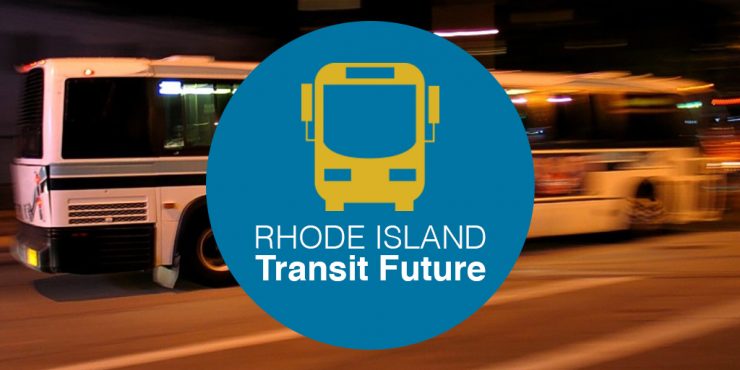
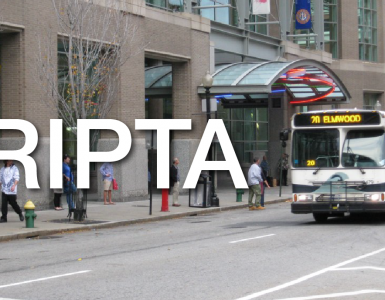
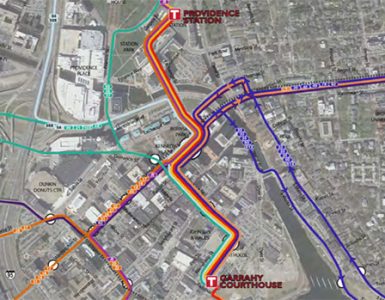

Almost every idea to improve bus service in RI – 24 service, more frequency, longer hours for the terminal building to be open, shoveling snow at stops, more marketing, new or extended routes, more schedule distribution, better hubs, not to speak of keeping free fares for the 30% riding free, all require more operating funds! Right now, there are not enough operating finds to maintain the current service.
Solutions are not just going to the Assembly for more money, but stakeholders taking steps to attract more passengers as the farebox is another source of revenue. Internal efficiency is another item to look at, I think CEO Ray Studley and his team have made a lot of progress but the end of year CEO report indicated overbudget overtime is still an issue. So is the paratransit operations which need some kind of oversight on a larger scale as it seems there are many (expensive) paratransit operations.
This is such a good idea. My only question about this is why the bus routes are so wobbly. Some of them look like gerrymandered districts. Getting routes that look less like Swiss cheese would probably make taking RIPTA easier, and since nighttime service is likely not going to be able to be super frequent at first, that prevention against confusion is important. A more linear set of routes might also mean operational advantages: the buses could get their routes done more efficiently and thus be able to do more frequent returns on the same budget.
I would provocatively argue that this is far more important to working class people than free fares. As someone who is 30 and still hasn’t ever popped above $15,000 a year (and is often below that, frankly. . . ) the free fares sound enticing. But far more important to me would be being able to get around freely (as in, with liberty of movement). Span improvements would help that.
This is genius, you hit every major part of the metro with only six lines…sure the routes are wobbly but it’s 3 am and you’re just thankful to have a ride…I get it. I love it!
I like the idea because it’ll be better than taking a cab at 3:00 am in the morning.
Every university should be connected to downtown with a train or streetcar. Downtown should be a meeting place, and nobody likes taking buses.